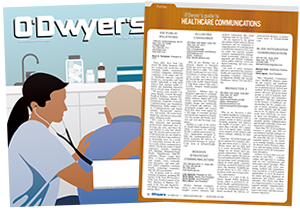 Kriste Goad Kriste Goad |
Putting consumer attitudes aside for a moment, let’s focus on healthcare’s B2B trust issue. The reason it’s so important — and the gap in trust so alarming — is because trust is absolutely critical among payors and the front-line providers of care if there is any hope of success for the mandated changes underway, from value-based care and population health to risk-sharing and new partnerships.
|
|
In fact, trust is the only factor cited in this year’s survey as both a driver and a hindrance, contributing to the slower-than-anticipated transition from the fee-for-service reimbursement system to one based on value. This was a linchpin of the Affordable Care Act, which was intended to resolve underlying problems in how healthcare is delivered and paid for in the U.S.
Health system executives said a whopping 87 percent of revenue in 2016 is still tied to volume rather than value (a five percent increase from the previous year) while health plans said they expect the majority of their 2016 claims (56 percent) to be based on volume rather than value (44 percent).
The good news? While brand, marketing, and communication professionals have little influence over many of the ACA’s provisions, trust is something they can actually help foster.
For years, surveys have revealed that consumers rank healthcare among America’s least-trusted industries, although trust in those on the front lines delivering care — and even for health plans — appears to be on the rise. Naturally, if healthcare’s key players can develop more trusting relationships, data, and technologies, consumer trust in that same system should rise, too.
The ReviveHealth Trust Index is the only survey that looks at trust among the system’s key business-to-business relationships, where trust begins.
Here’s are some key takeaways:
A shotgun marriage
A relatively low level of trust exists between the organizations that pay for health services and the organizations and caregivers that actually provide most of these services. On a 100-point scale, health plan executives have a higher level of trust in providers (67.6) than either doctors or hospitals have in health plans (54.9 and 54.1, respectively).
Pay-for-quality initiatives matter
To the degree there has been any progress on the trust issue, it appears to be based on the various parties working together to implement pay-for-quality initiatives. Seventy-six percent of health systems executives and 64 percent of health plan executives cited pay-for-quality programs as the most popular strategy for making the shift from volume to value.
The transition to value is slow
The disconnect is real. While payors say they expect 43.7 percent of 2016 claims paid are based on value, providers say they expect only 13 percent of 2016 revenues from value-based payments. Either way, we’re not even halfway there. Yet it’s clear health plans define value-based payments very differently from the provider definition.
Risk tops the list
Aversion to taking on risk tops the list of factors stalling the transition to value-based care. At least 95 percent of health system executives say caution by leadership to take on additional risk is hindering the transition while 100 percent of health plan executives point to this provider resistance.
Some health plans are better than others
This is perhaps the greatest area of opportunity for health plans to differentiate themselves with better communications, information sharing, and physician engagement.
We asked physicians which plans are better at respecting the doctor/patient relationship, and while local Blues plans rated higher by far on this measure than other health plans, the most common reason physicians gave when asked why one health plan was better than another was “they’re all the same.”
Trust is the potential glue
All three sectors agree that for the transition to value to go more smoothly and rapidly, increased levels of trust will be necessary, based heavily on the new alliances needed to deliver bundled care, reduce readmissions, share in cost savings and better manage the health of large populations. In fact, 94 percent of health plans and providers alike said decreased trust was either a very important or somewhat important factor restraining the transition to a value-based payment structure.
Technology and data can close the gap
Another key factor holding providers back from a more rapid transition to value-based payment arrangements: the lack of technologies and processes to support this transition, including access to timely and reliable data.
Closing the gap
There is a huge role that we communications experts can and should be playing in our organizations to drive trust in our brands. With better communication between and among health systems, health plans, and front-line physicians, trust will improve, which in turn will help improve the patient experience and (hopefully) consumer trust in the healthcare system.
The key question is how. We subscribe to the theory that there are four drivers of true trust and that each must not only be present, but existing and moving forward together:
Communication: Internal communication is just as important as external communication. It’s important for everyone in your organization to know what you stand for, the direction you’re headed, and how you plan to get there. Share this with your external audiences, too, so they know what to expect and how to work with you.
Consistency: What you communicate is as important as how and how often you communicate. Stay on message, keep the communication flowing on a regular basis, and have an omni-channel strategy to be sure you’re reaching your audiences where they are.
Compassion: Do the research. Understand the challenges your audiences face, and demonstrate in your words and deeds that you not only feel their pain, but tell them what you’re doing to alleviate it.
Competency: No organization is great at everything, nor do people expect them to be. Know what you’re good at, work to improve areas that need improvement, and tell people about both.
* * *
Kriste Goad is Chief Marketing Officer at ReviveHealth.



 Lo Isidro, senior director at Real Chemistry with more than a decade of strategic communications and PA experience, has joined Narrative Strategies.
Lo Isidro, senior director at Real Chemistry with more than a decade of strategic communications and PA experience, has joined Narrative Strategies. Nelson Fernandez, former North American chair of APCO Worldwide and managing director of Burson-Marsteller, has joined Volunteers in Medicine Berkshires as director of communications and PA.
Nelson Fernandez, former North American chair of APCO Worldwide and managing director of Burson-Marsteller, has joined Volunteers in Medicine Berkshires as director of communications and PA. Lilit Bargar, who was most recently an EVP in the healthcare practice at Weber Shandwick, comes on board at GCI Health as EVP, corporate practice lead.
Lilit Bargar, who was most recently an EVP in the healthcare practice at Weber Shandwick, comes on board at GCI Health as EVP, corporate practice lead.
 Five ways that successful thought leaders are made.
Five ways that successful thought leaders are made.


 Have a comment? Send it to
Have a comment? Send it to 
No comments have been submitted for this story yet.